Taconite Harbor: Lake Superior’s Ghost Town
In 1957, trucks loaded with prefabricated homes rolled along Highway 61 toward a new building site just south of Schroeder. By 1990, the homes were leaving the same way they arrived. In the 1950s, business at the Erie Mining Company was booming. Taconite pellets harvested from mines in Hoyt Lakes were sent by train to the company’s loading docks–designed to be the fastest loading in the world–on the shore of Lake Superior. From there, the taconite was sent by ship to Detroit to make automobiles, or to steel mills further east. Each year, an average of 10 to 11 million tons of taconite pellets were sent out of this facility.
Twenty-two tidy three or four bedroom homes arrived in 1957 to line two streets nestled between Highway 61 and Lake Superior. Each home was built in about two hours. A fire hall and community center were also erected around this time. Although the area was technically part of Schroeder, the little neighborhood established itself as Taconite Harbor.
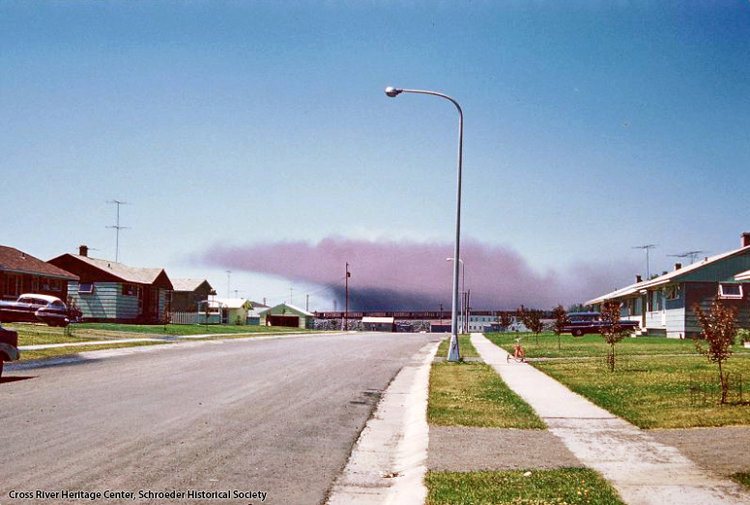
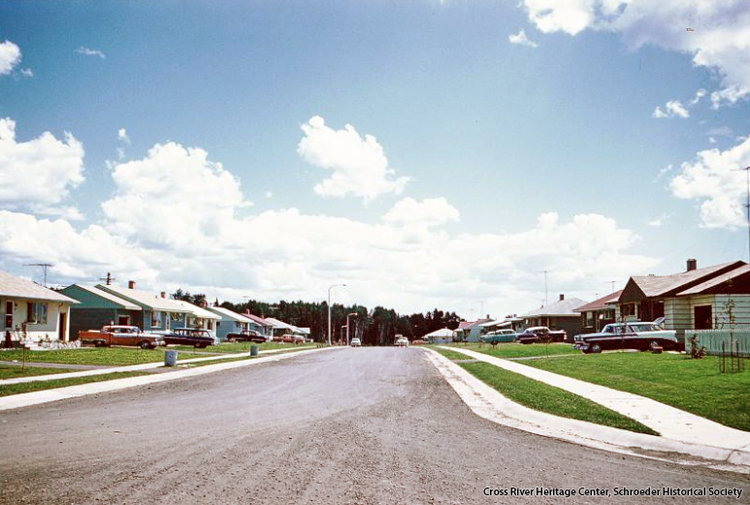
For $400 down and $100 per month, workers at the nearby loading dock and power plant could settle into the quaint, pastel-colored bungalows. Ornamental trees and shrubs were planted and backyard gardens were tended with care. A playground, baseball field, and tennis and basketball courts were carved out of the ample open space behind the homes. There were block parties and volleyball games in the summer, ice skating and hockey games in the winter. There were as many as 74 kids in this small neighborhood in its heyday. Families flourished here.
By the early 1980s, many families started to move on. Some retired and moved away, others wanted a home away from the noisy railroad cars and taconite dust. By 1982, the mining industry fell on hard times and the facility was forced to scale its workforce down to about 100 people. The only people left in the neighborhood were a handful of retirees and the few workers that were spared a pink slip.
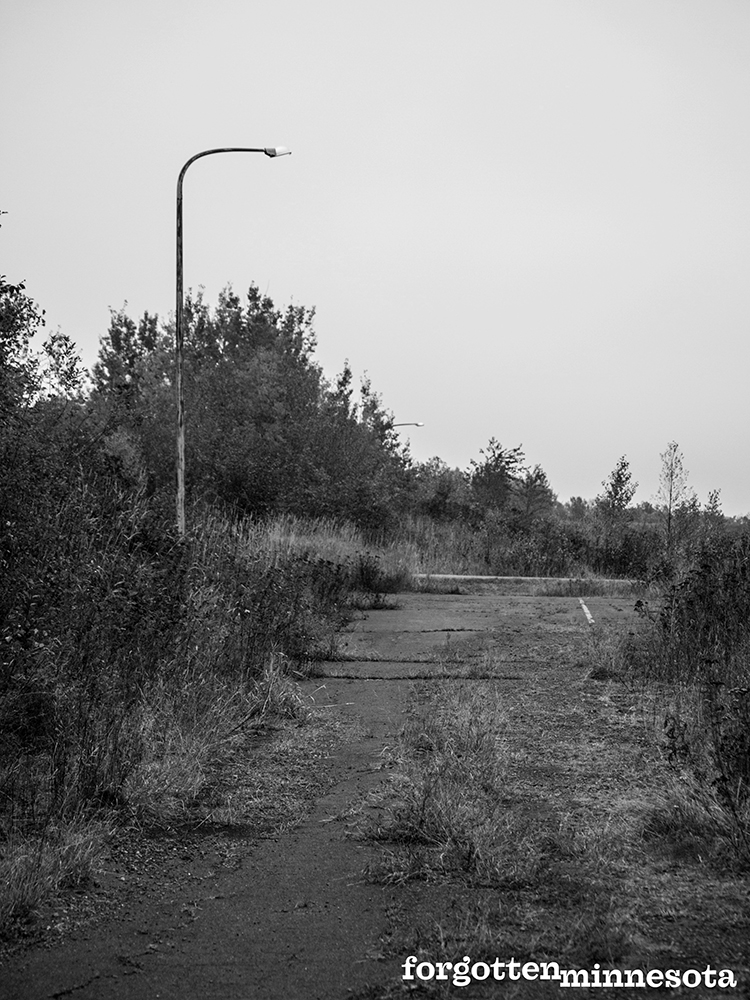
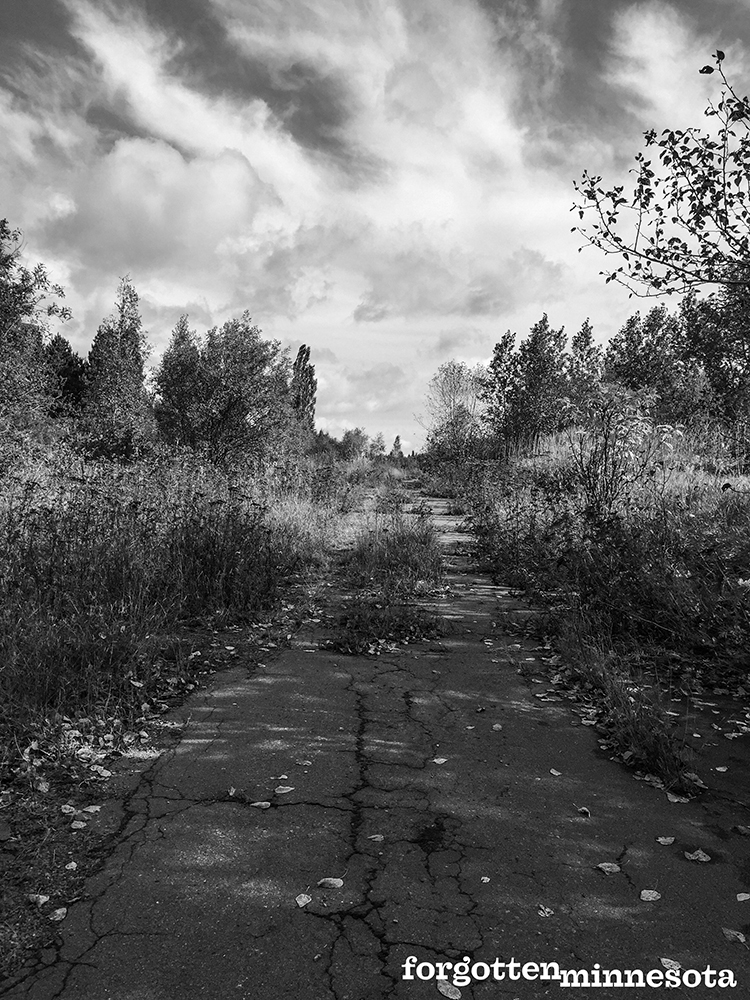
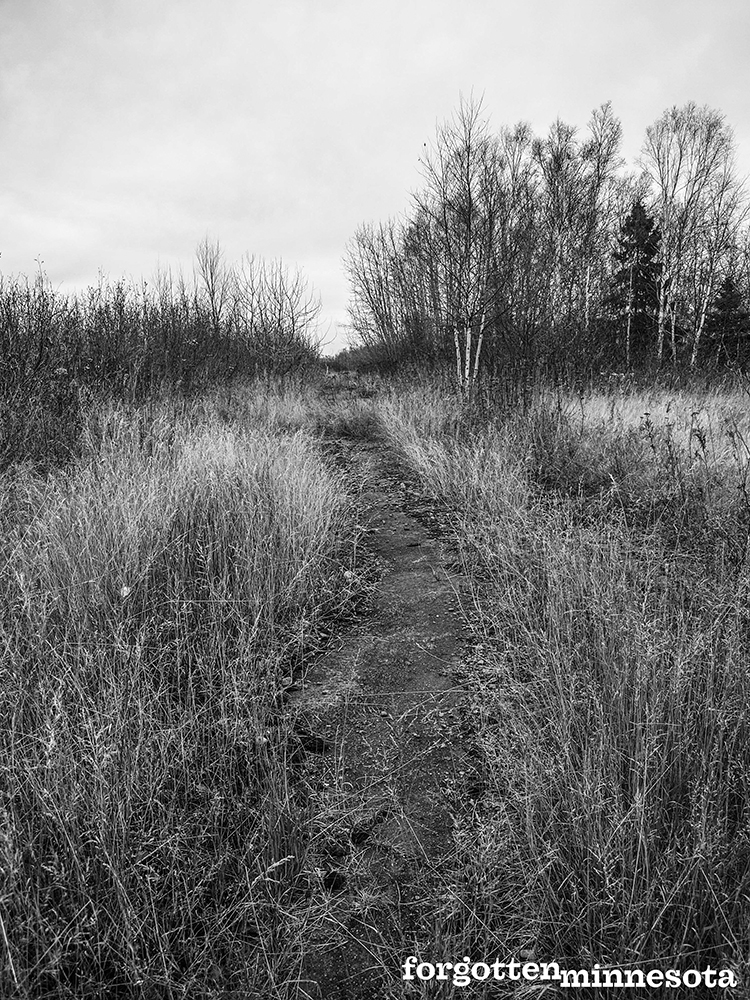
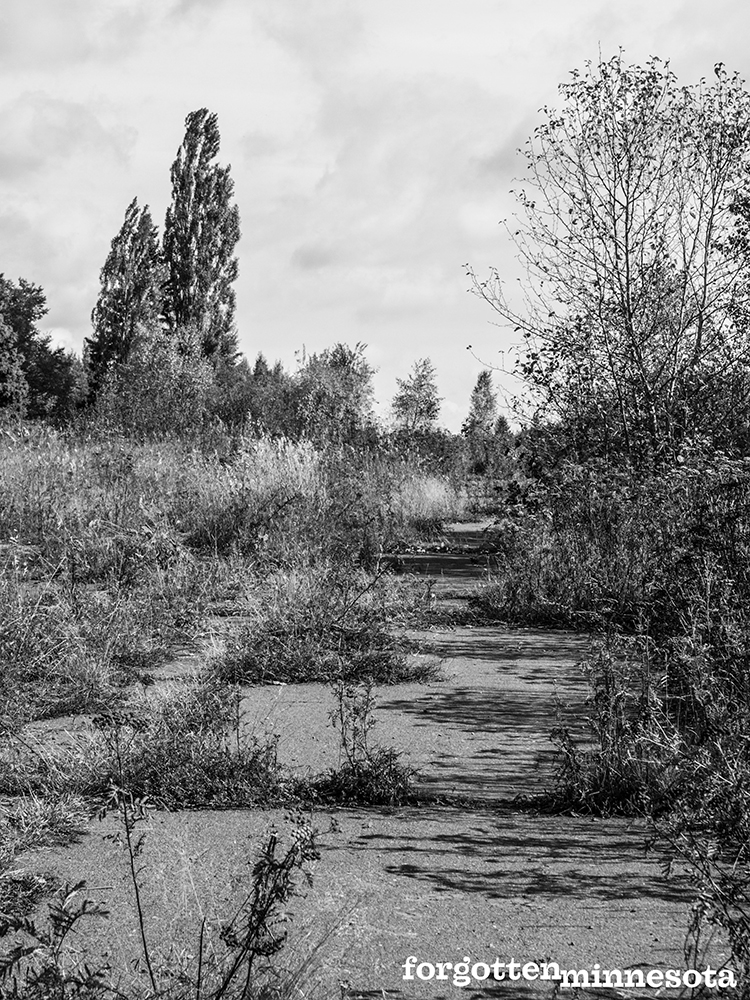
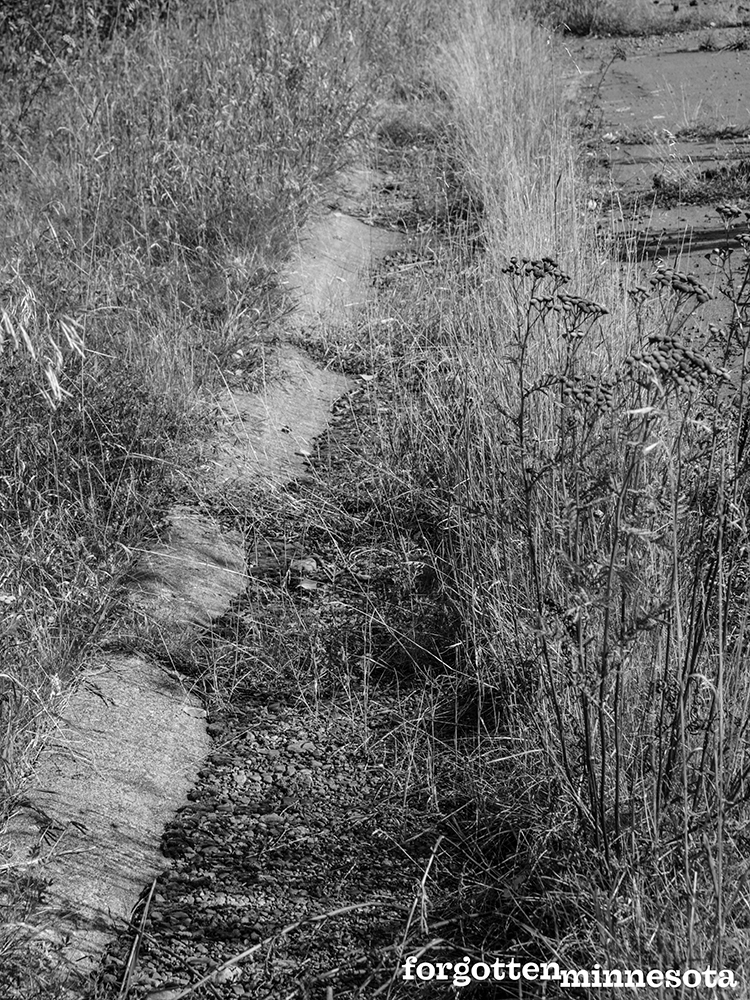
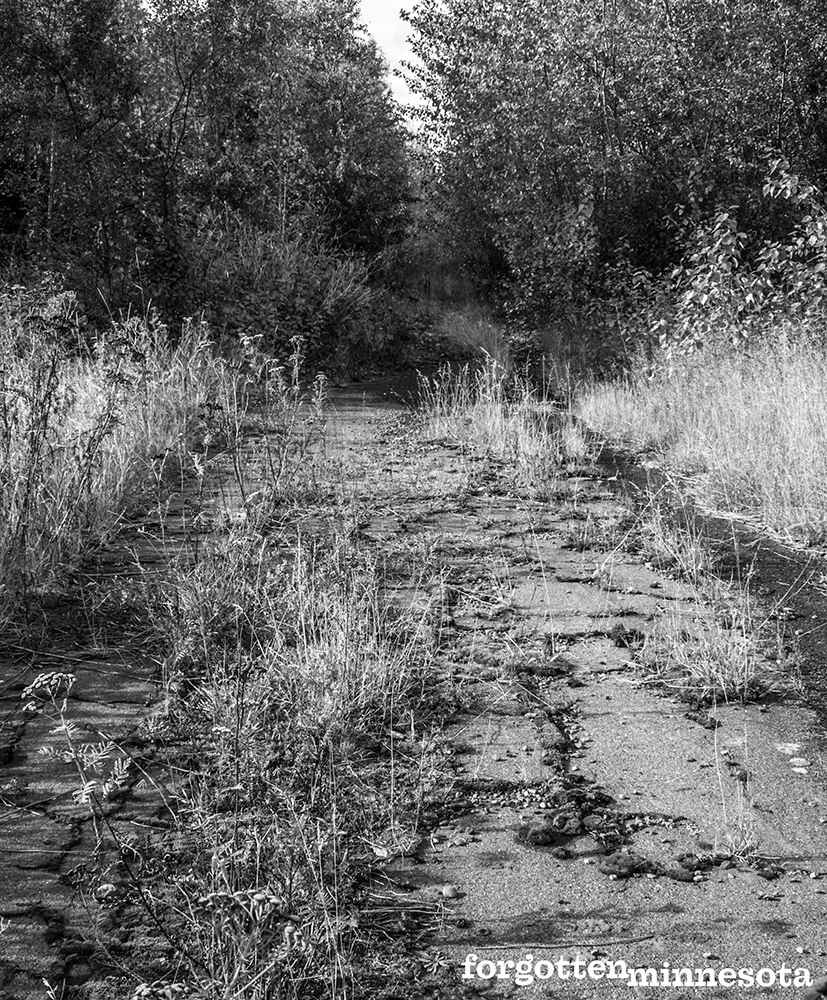
In 1986, the 21 families remaining in Taconite Harbor were told they would have to move. Erie Mining Company (now LTV Steel Mining Co.) was no longer interested in being a landlord. The inexpensive homes with million-dollar views of Lake Superior were going to be moved or demolished. LTV offered the homes to residents for only $1, providing they move it to another location. The company announced it was going to tear down the remaining homes in 1988 to make way for a limestone dump site. That plan fell through when an environmental study came back with pages and pages of negative factors. The last family left Taconite Harbor in June 1988. LTV Steel filed for bankruptcy shortly thereafter.
A local developer sealed bids for the homes, along with the fire hall and community center. He planned to move the town off-site and sell them piecemeal to interested parties.
Today, you can follow a winding road down to the lake from Highway 61. A safe harbor and boat launch are open to the public. A small outdoor museum exhibits a sample of taconite and some of the equipment used to mine and ship it. Most people don’t give a second thought to the empty space they passed on their way in.
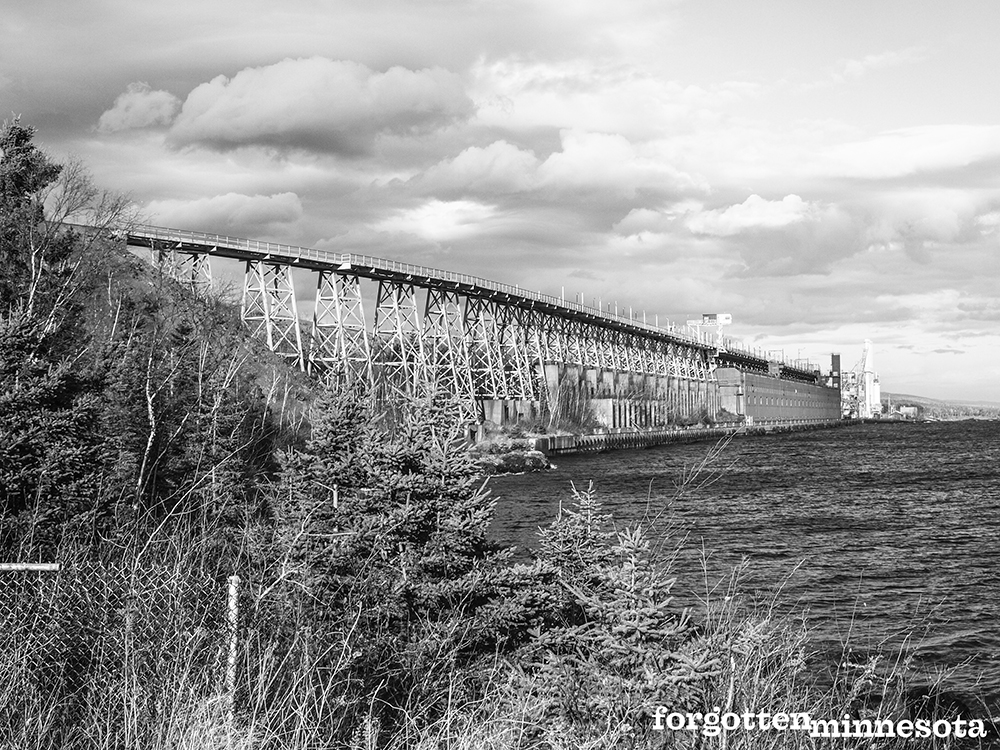
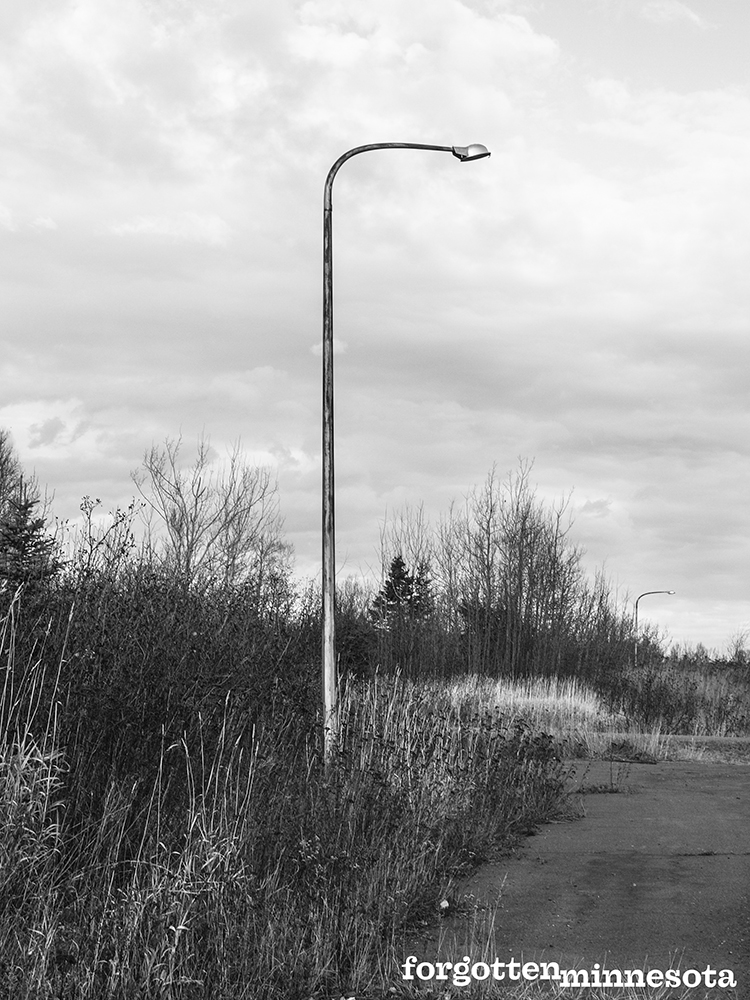
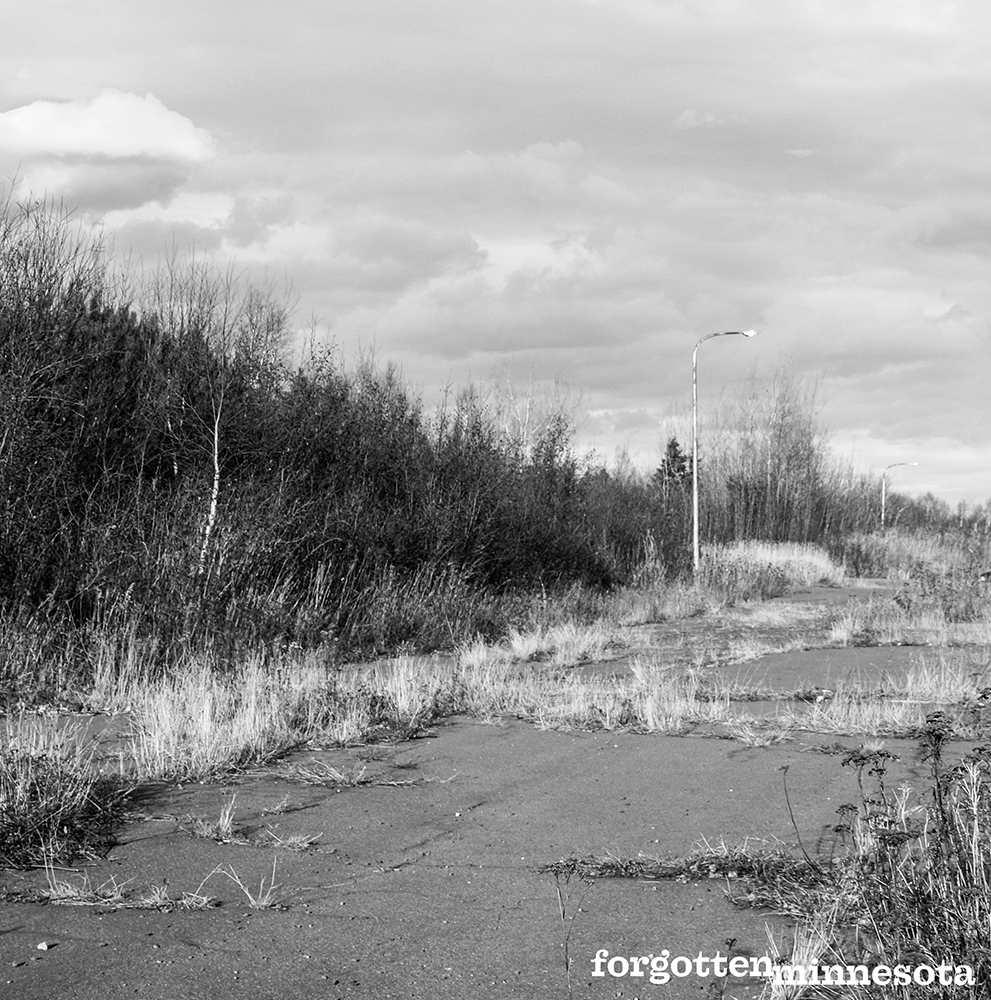

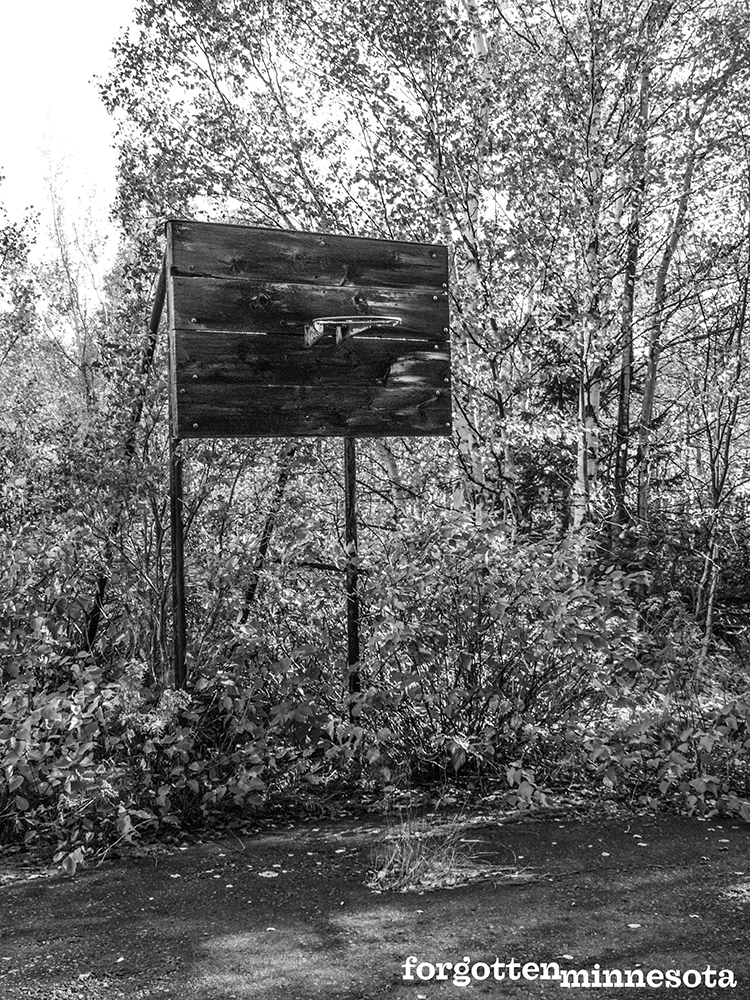
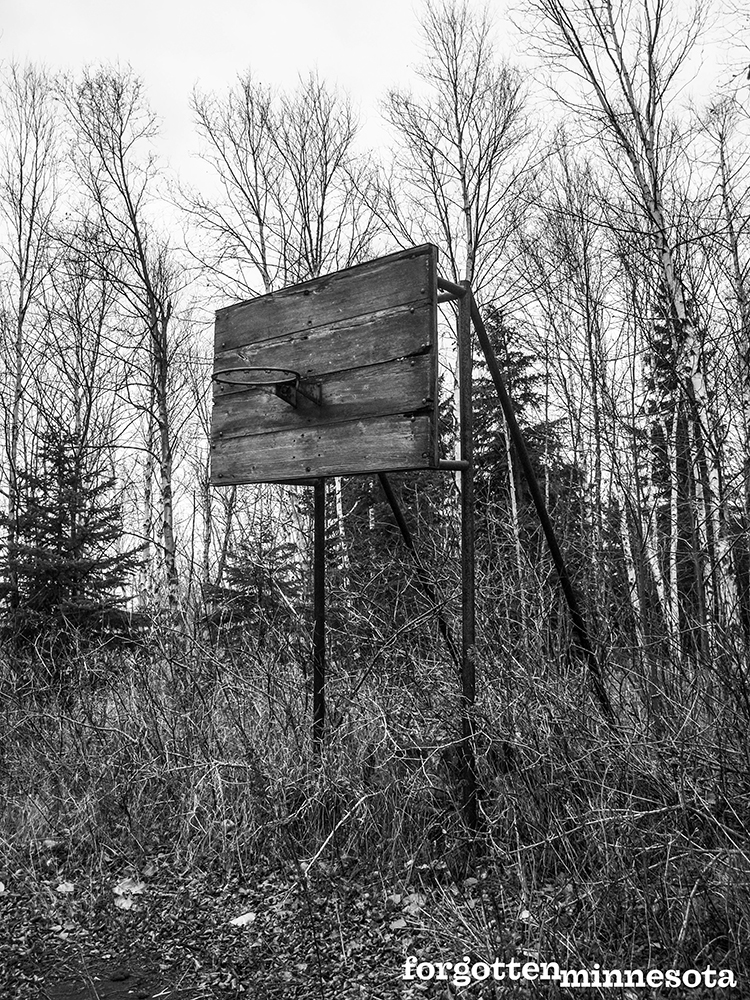
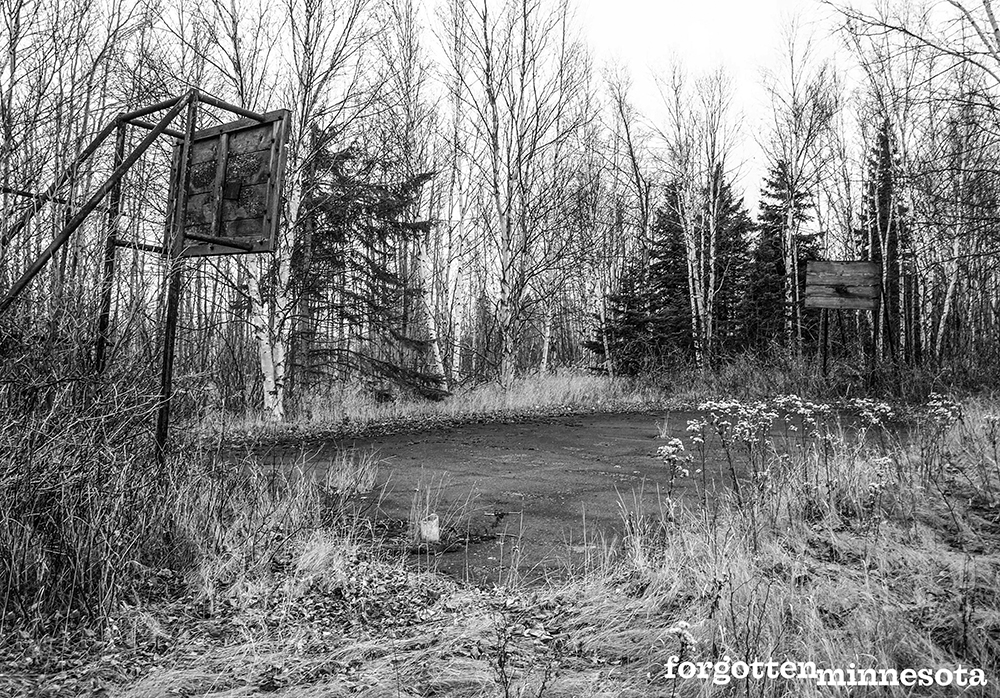
As you turn away from the lake and head back to Highway 61, you will pass where the playground and tennis court once were. The baseball field was on your right. If you look closely, a keen observer will notice a couple of rusty streetlights. Grass and weeds are slowly reclaiming the two rows of crumbling pavement and curbs that were once the streets of Taconite Harbor. Concrete holes that once led to the sewer/drainage system can still be found nearly covered in weeds. The old basketball court is still waiting for the next game.
If you get out and walk along the crumbling streets, you can visualize where the houses once stood. Large trees make way for open grassy spaces where a foundation may be spotted. A rhubarb plant still thrives in a long-overgrown garden that was once someone’s backyard. This is a true Minnesota ghost town.
Additional historic photos of Taconite Harbor can be found at the Schroeder Historical Society website.
